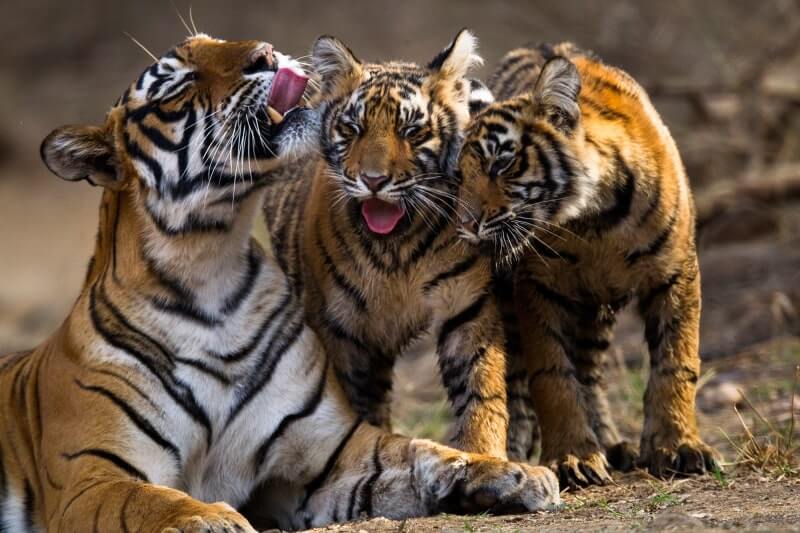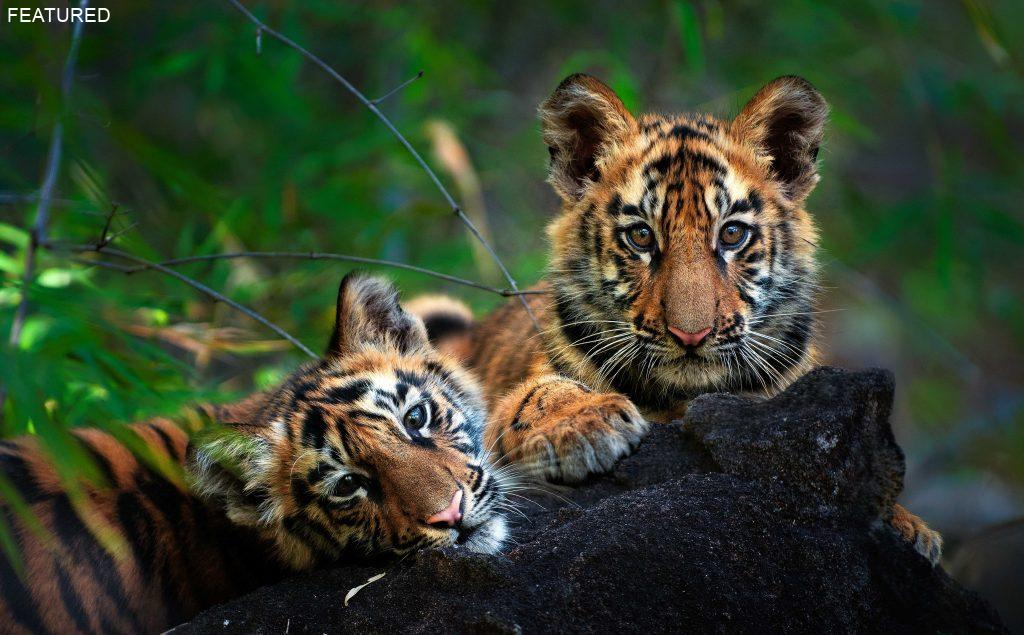The legacy of tigers unfolds in the heart of the wilderness, where the jungles reverberates and celebrates the birthing of tiger cubs. The newly birthed guardians of the forests – the tiger cubs, are the flag bearers in the intricate tapestry of the ecosystem and the rightful apex predators of the food chain.
India is home to the largest population of Royal Bengal tigers found in the world and has been a historical witness to a generations of tigresses reproducing and raising their cubs, in its dense, thriving woods.
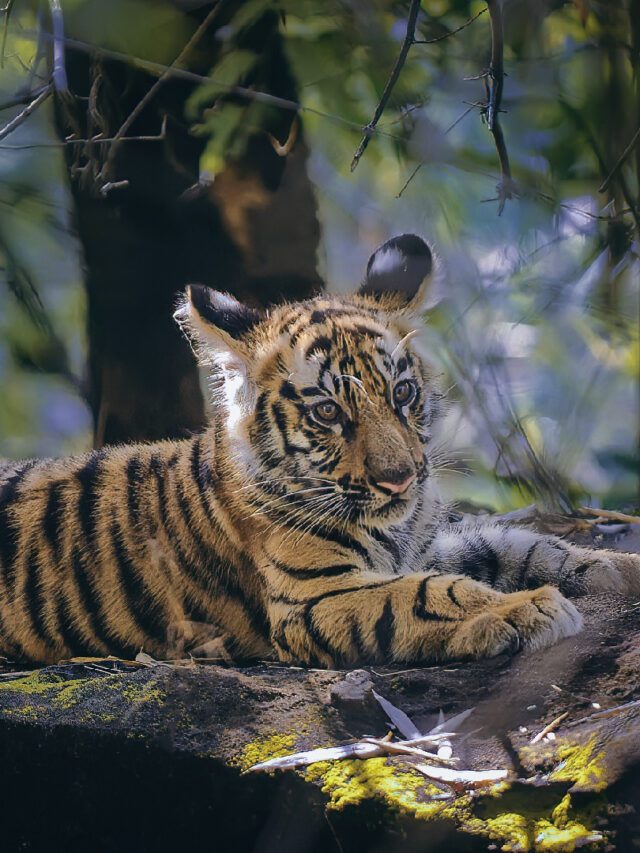
Gestation Period and Birthing
A New Legacy: Usually a tigress focuses on her hunt, but once she finds her mate and is ready to give birth, her entire focus changes. This includes finding a safe place to birth and raise her cubs; one where there will be a ready supply of food.
The gestation period lasts about three-and-a-half month (105 days) approximately.
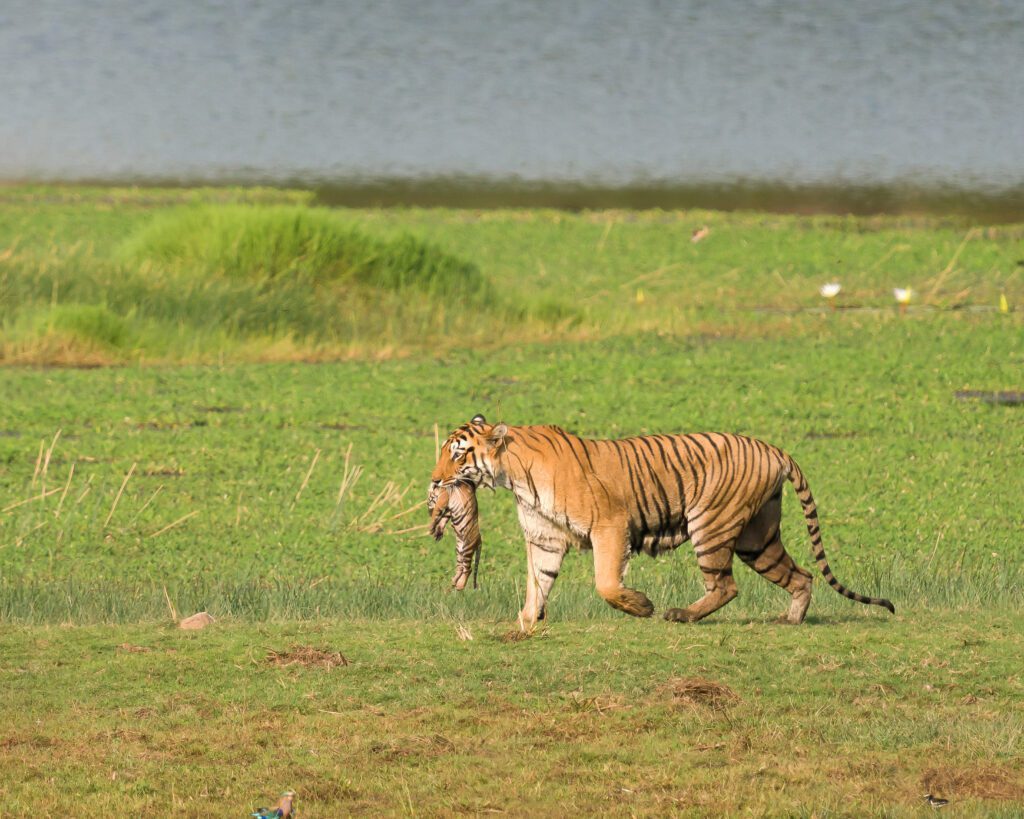
Protective Mother: In the early months the cubs are solely dependent on the mother and the tigress is not in a position to leave them unattended for prolonged periods. She is overtly protective and cautious and keeps them isolated. Therefore, homing them in dens, inside caves and ditches and she readily changes their location once threatened by the presence of a new male or female in that area. Even leopards and sloth bears and other predators can be of threat to her cubs, therefore she stays vigilant at all times.
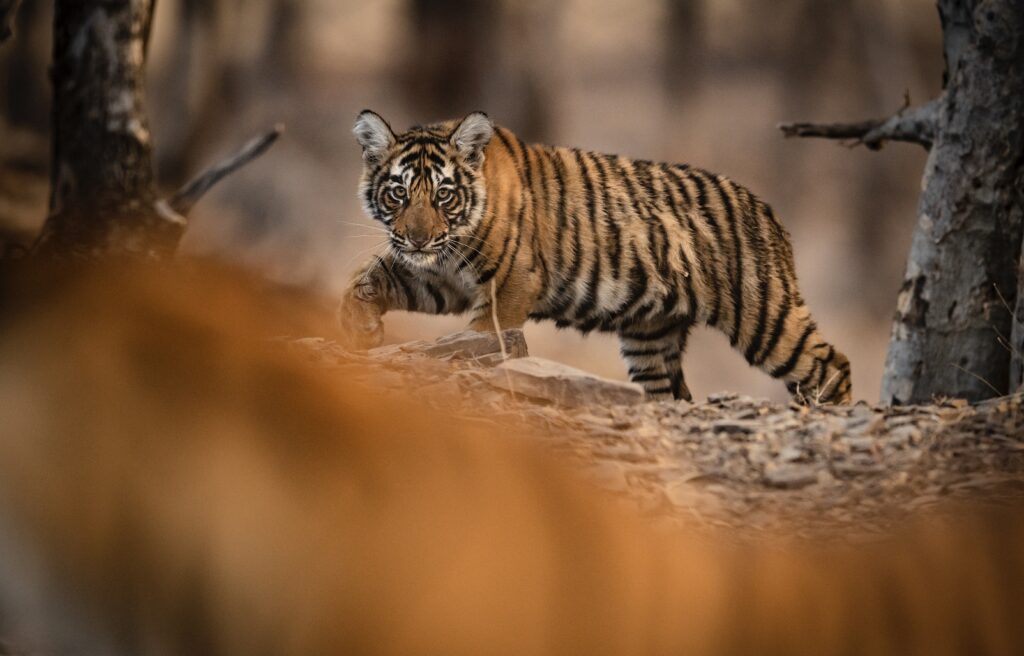
On an average a female gives birth to 2 to 3 cubs, which may also vary to 4 to 5 cubs and at maximum 7, of which only 2 or 3 survive.
Since the mortality rate is high, these carnivores have multiple births. If well supported by dominant males of her territory, she can raise 5 to 6 different litters in her life span. She wait about 18 to 24 months to birth again.
Tiger Cubs at Birth and the Developmental Months
Vision: Tiger cubs are born blind and their eyes open sometime between 6-12 days. Their vision stays fuzzy for a couple of weeks thereafter, before they can see clearly.
A newborn tiger cub can weigh between 750 gm to 1200 gm approximately. They are born with blue eyes which transits to the signature gold colour as they grow.
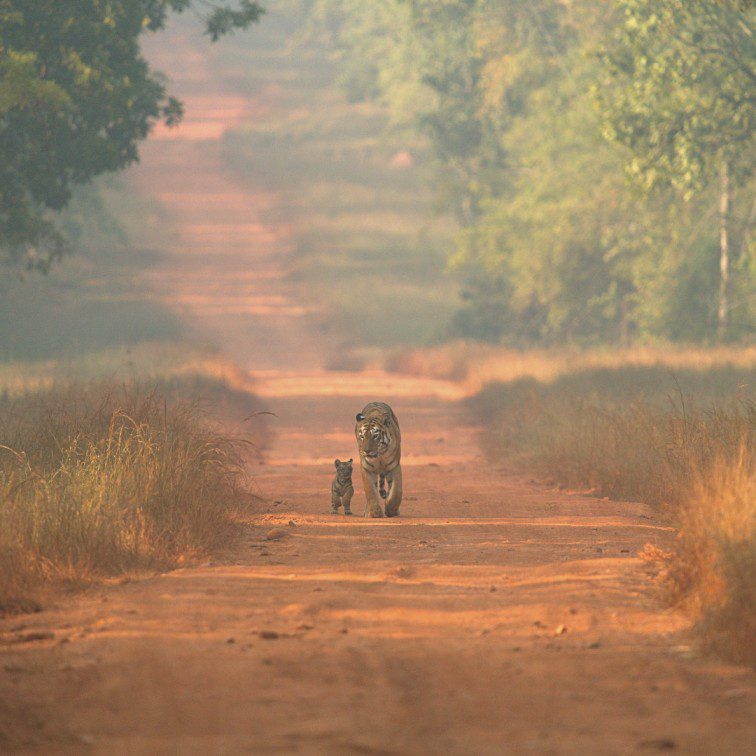
Nursing and Care: In the early weeks the tigress is fiercely protective of her young ones and she nurses them. Till they are about 8-10 weeks old, they are solely dependent on the mothers milk. She spends most of her time caring for them and nursing them, and is extra cautious about their safety and well-being.
A tigress is the sole care giver of her cubs. Although the cubs develop their milk teeth by the end of the first month, they remain concealed in the den and thickets of vegetation for most of their second month, feeding exclusively on the mother’s milk.
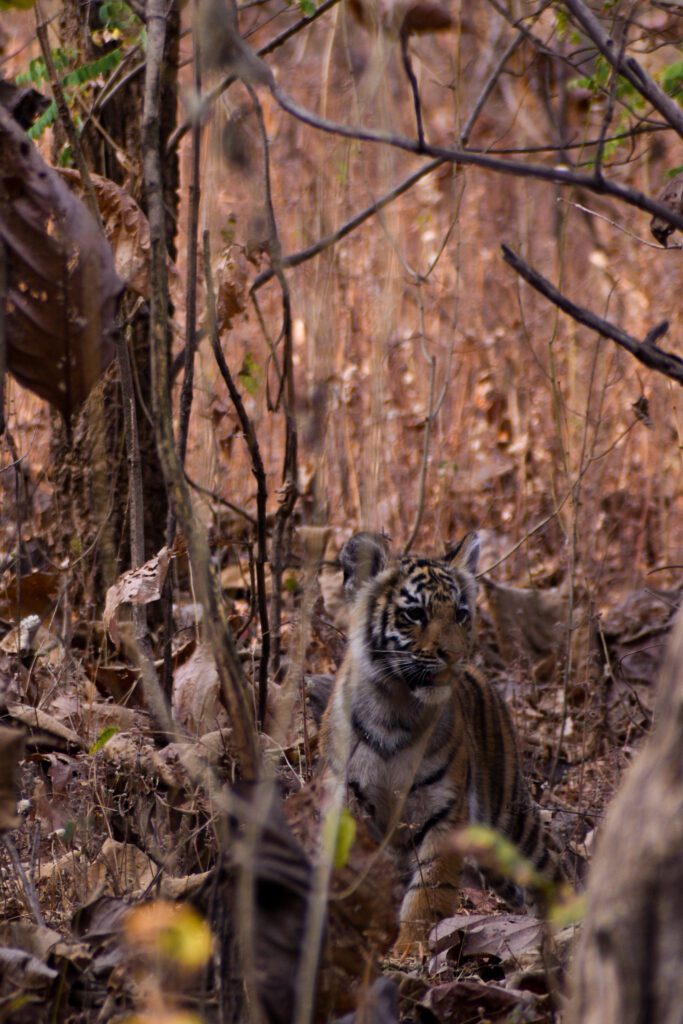
Since the nutritional intake of a nursing tigress needs to be high, she is known to hunt and consume a prey once in 5-6 days, as opposed to preying on one every 8-9 days. Despite that she never strays too far away from her territory, to ensure her cubs are safe. She leaves for a short period for hunting and water excursions.
A tigress is known to stimulates the cub’s circulation and bowel movements by spending large periods of time licking them. She even eats their faeces to avoid potential predators from detecting their scent.
Growing Up
Eating Habits and Defence – The First Six months: Tiger cubs begin consuming solid food/meats when they are over 8-10 weeks old.
The mother may move them from the birthing den to hunt in different parts of the territory. When the cubs are ready to get their first taste of meat, that is when they leave the den to eat their mother’s hard earned kill, off the bone.
When they are about 2 months old they leave the den with their mother.
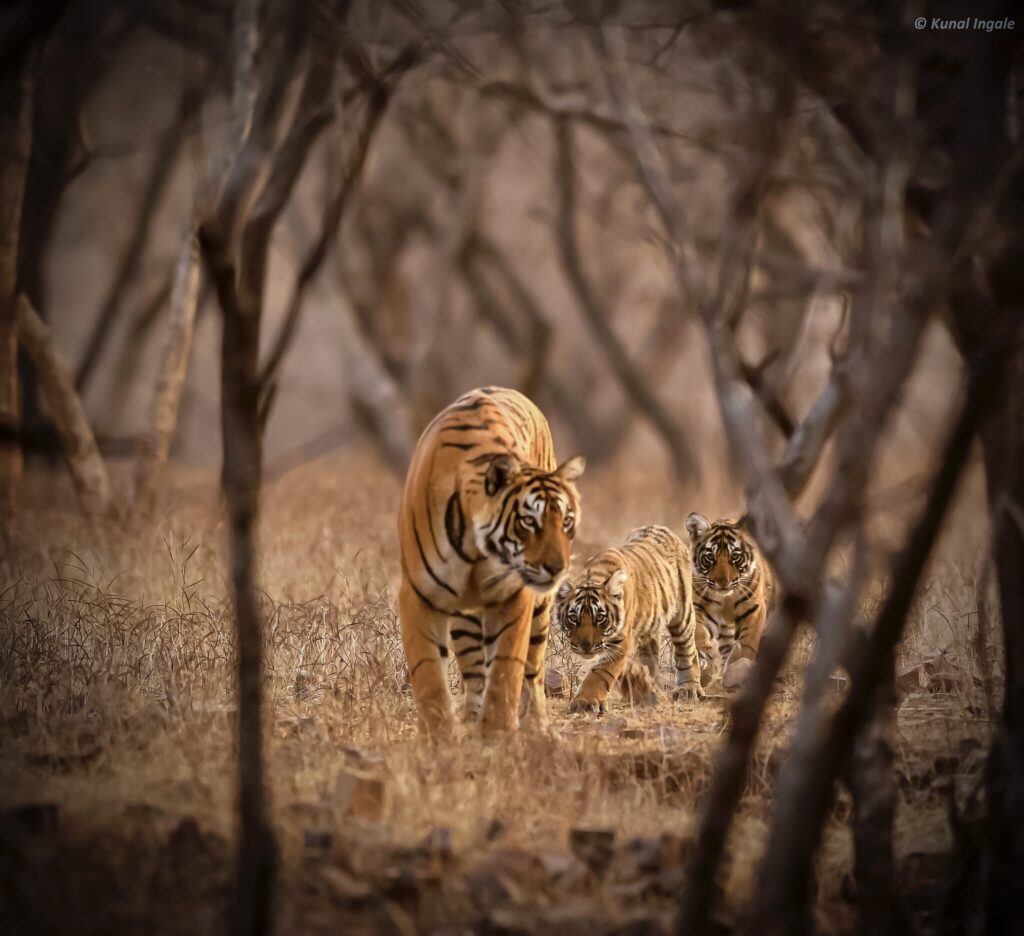
The tigress still keeps a strict vigil and is extremely attentive even when they are out of their den, eating meat. She conceals them in temporary hide-outs, tall grasses and bushes, while she goes out to hunt for long periods.
By the time they are four months, they tend to be a lot more hungry and active, therefore she leaves them to go find a prey for longer periods.
Around this time they start gaining weight. At this age they tend to be extremely playful, wrestling with and pouncing on their siblings, including their mother. By this time they are also the size of a medium sized dog
#DidYouKnow: A 6 month old tiger cub’s pug marks are bigger than that of a fully grown leopard.
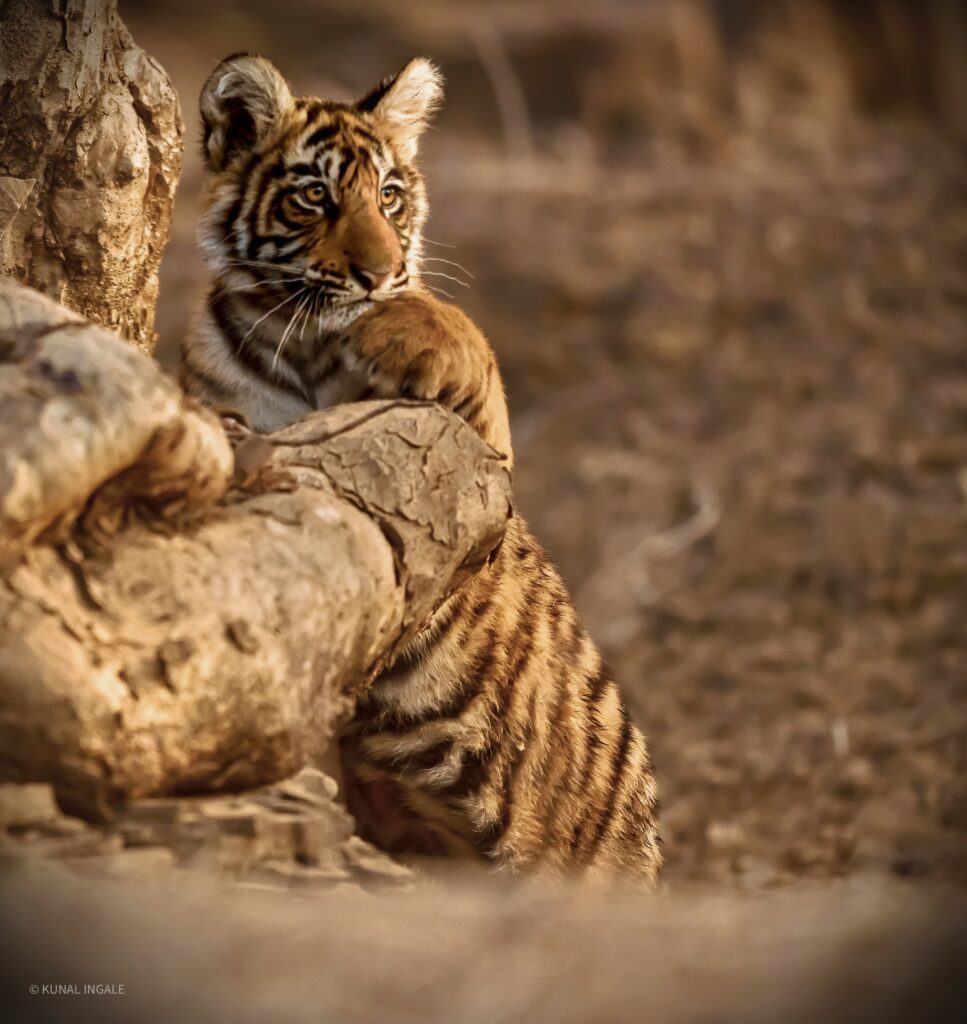
Until the cubs are about six months they are vulnerable and unskilled at self defence. There is one in three chances that they will die of infections, get hunted down by predators like wild dogs, leopards, wolves etc., or succumb to forest fires or floods, or be a victim of infanticide by a male tiger that isn’t their father. This happens so that the male tiger can establish his male dominant gene.
Cubs are also weaned off from their mother at five-six months of age as her milk dries up, but still they are not ready to hunt on their own. Technically they are weaned off, but a tigress can be seen suckling her cubs at any age.
Vocabulary and Vocalisation – Turning a Year old: The tigress uses a specific vocalisation for her cubs that includes soft, sharp grunts that sound like ur-ur-ur, asking them to follow her. An affectionate loving greeting can be a sneeze or prusten (also used among adults), and a small woof when the cub pounces on her.
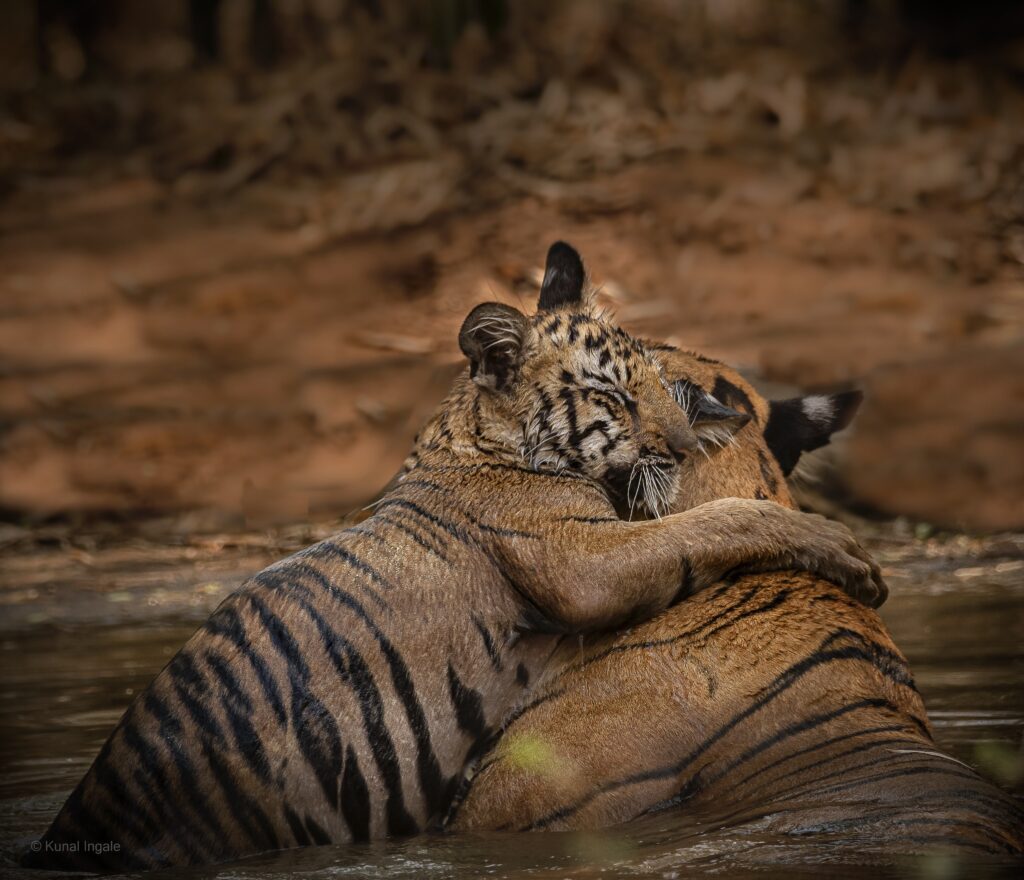
A cub that is upset will miaow, but as they grow older they are seen to snarl and whicker at each other, without ever being noisy. A mother will purr while nuzzling upto her cubs too.
In due course of time as cubs turn into adults, they learn to use three other vocalisations which include:
Roaring, usually when they have to mate, or sometimes when they are irritated. It’s a long distance communication, not used by cubs.
The moan is a low, subdued roar and the tiger cubs may recieve it as a warning if they are approaching a kill uninvited.
Pooking is a medley of a hoot and deep bark, and appears to be like a warning call or alarm call.
Learning the Ropes of Adulthood
Hunting Secrets – Leading by Example: By 12 months of age the cubs start accompanying their mother for the hunts. There are no classroom lessons, or moments where the cubs are taught to hunt; rather they are initiated into the process by watching their mother. The best way to teach a child as they say is, “Lead by example.”
The tigresses will be seen bringing down a kill; say a deer, but she will leave it to her 1 year-old cubs to kill the prey, even though they may not know the exact ropes in the initial days.
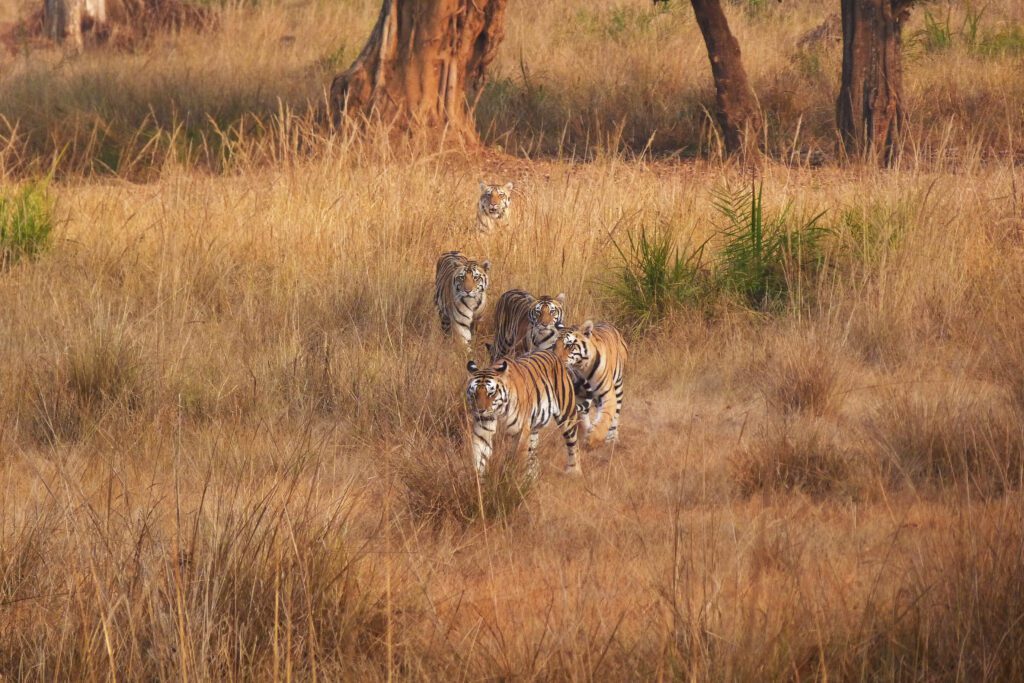
Physical Attributes: A cub of 12 months may weigh about 50 kgs and may still have temporary canines which are not efficient enough to tear down and puncture he tough skin around the neck of the prey.
The permanent canines only appear around thirteen to fourteen months, yet that does not ensure the actual killing bite will work. It takes trail and error before they learn the tricks of the trade.

All work and no play makes the cubs dull kids : The cubs entertain themselves with bursts of lively and zestful play. The engage with each other energetically, and in all likelihood learn the most from each other.
They stalk each other, bounce and pounce on each other, roll around with each other in a interlocked cuddle, and use their claws to thrash each other playfully. They creep after birds like peacocks and even make successful attempts to climb a tree, which may come to naught as they approach adulthood.
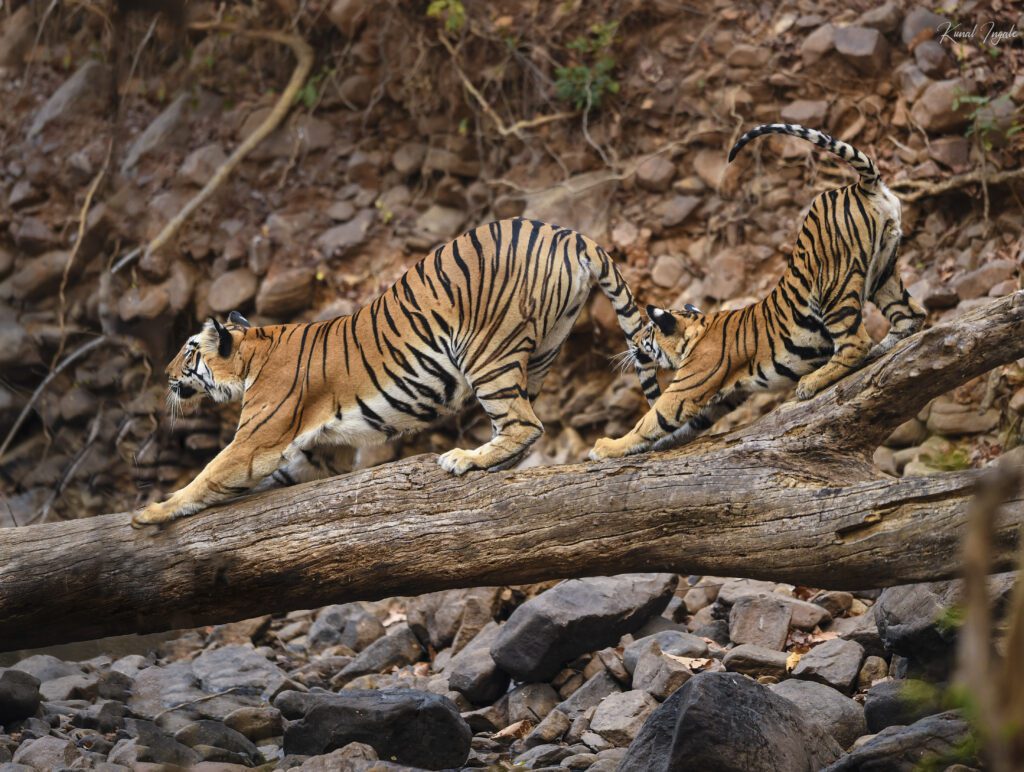
#DidYouKnow: Every litter has a dominant cub which will lead the others into play and also sometimes favoured by the tigress. The cub does not necessarily have to be the largest male.
Male versus Female Cubs: Though male cubs grow bigger and are far more domineering, yet that does not translate to them being far more adventurous. Female cubs are temperamentally more investigative and sometimes even less wary. Though on the lop side, it is believed that the survival rate of the female cub is higher than the male, as male cubs sometimes tend to roam further away from their territory.
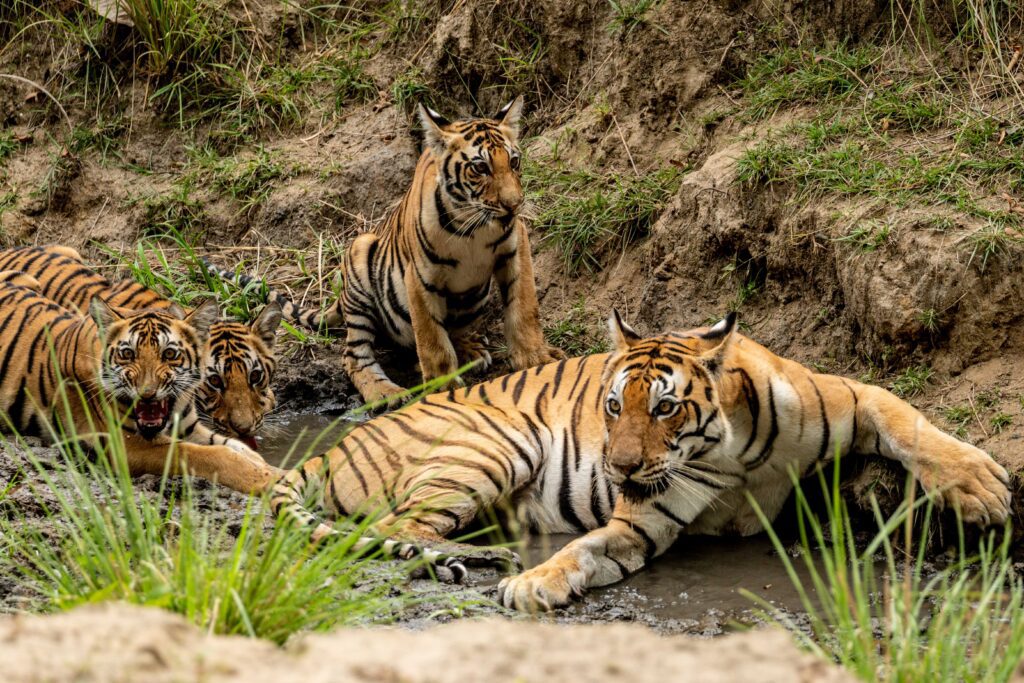
Sibling Bond: The sibling bond is strong and gets reinforced by all the play, hunting and sharing meals together. This bond holds them together even when they have left their mother, as they continue to hunt together, until they acquire solitary independence.
Independence: By the time the cubs are 18-20 months they are fully grown juveniles who are able to hunt on their own. The tigress cannot provide for their ever growing appetite, and since the prey isn’t localised to just one area; the cubs gradually start drifting from their mother. The tight family bond slowly starts dwindling into a more solitary behaviour.
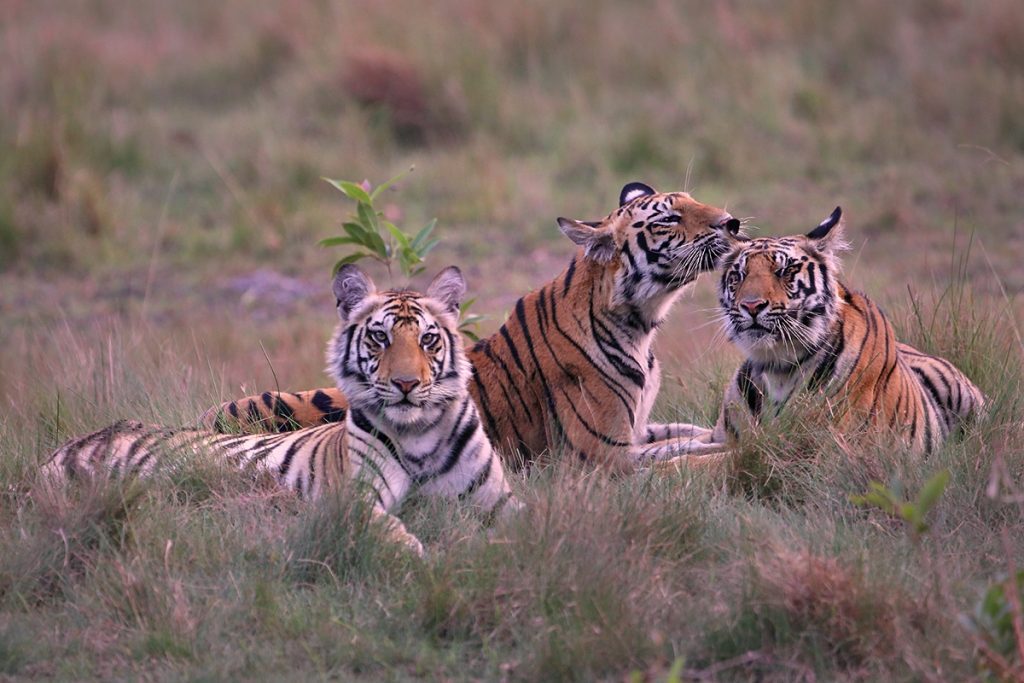
At 24-26 months, the sub-adults eventually part ways completely to establish their territories. A tiger family derives a lot of comfort and support from each other, and a streak of tigers is a perfect picture of fulfilment, camaraderie and joy. Yet, these bonds start disintegrating with shortage of food, and the mother coming into oestrus (heat), and is ready to mate.
There will be an adult male who comes into the picture, who in all statistical probability won’t be there father. This new man in the tigresses life does not take to the young tigers kindly, especially if they are males. Therefore, the sub-adults have no choice but to leave the comfort of their family and find ways to establish their new territories.
Operating Solitary: The males are known to wander off far from the original territory, in search of greener pastures; whereas the female sub-adults will stick to a territory that is close to their mother, or intersects her territory. One of the reasons why female tiger cubs have better chances of survival.

When the sub-adults leave to establish their independence, this proves to be the second most dangerous time of their life, the first being when they were small cubs. The chances of them being killed is almost 35%. They may be killed by dominant tigers, or driven away by these tigers into villages and farmlands where they start preying on cattle and livestock, leading to the villagers baiting or poisoning them; or they get poached.
The tigers that make it, operate on stealth mode, hunting by night, lying low, and being alert to the signs left by other aggressive tigers.
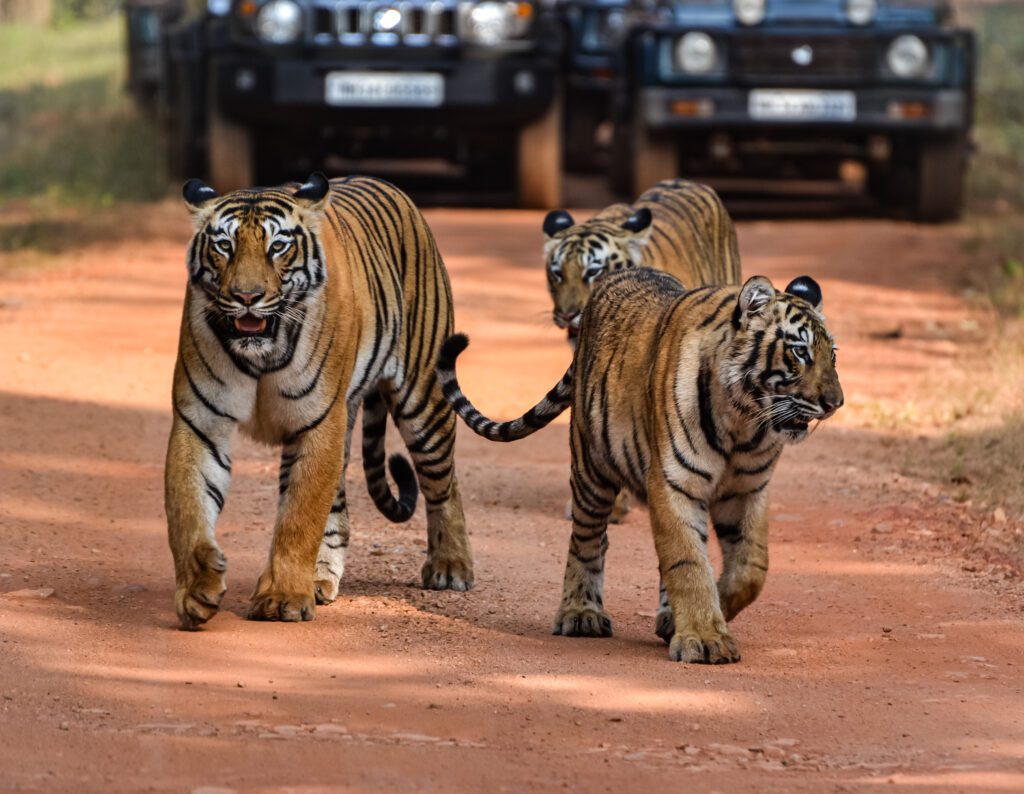
On the hindsight, tiger cubs and tigers don’t have it as easy, but it may seem so to most onlookers on a jungle safari. The monarchs of the forest have it tougher than we can ever imagine – living each day on the edge, trying to establish their dominance, while ensuring they are have enough prey, and safety net to sustain their survival. The laws of the jungle can never be contested, as is the survival of the fittest.
The grown up cubs, or adults continue to live each moment king or queen size; making sure the forest quivers to their thunderous roars, and resounds to their their regal presence.
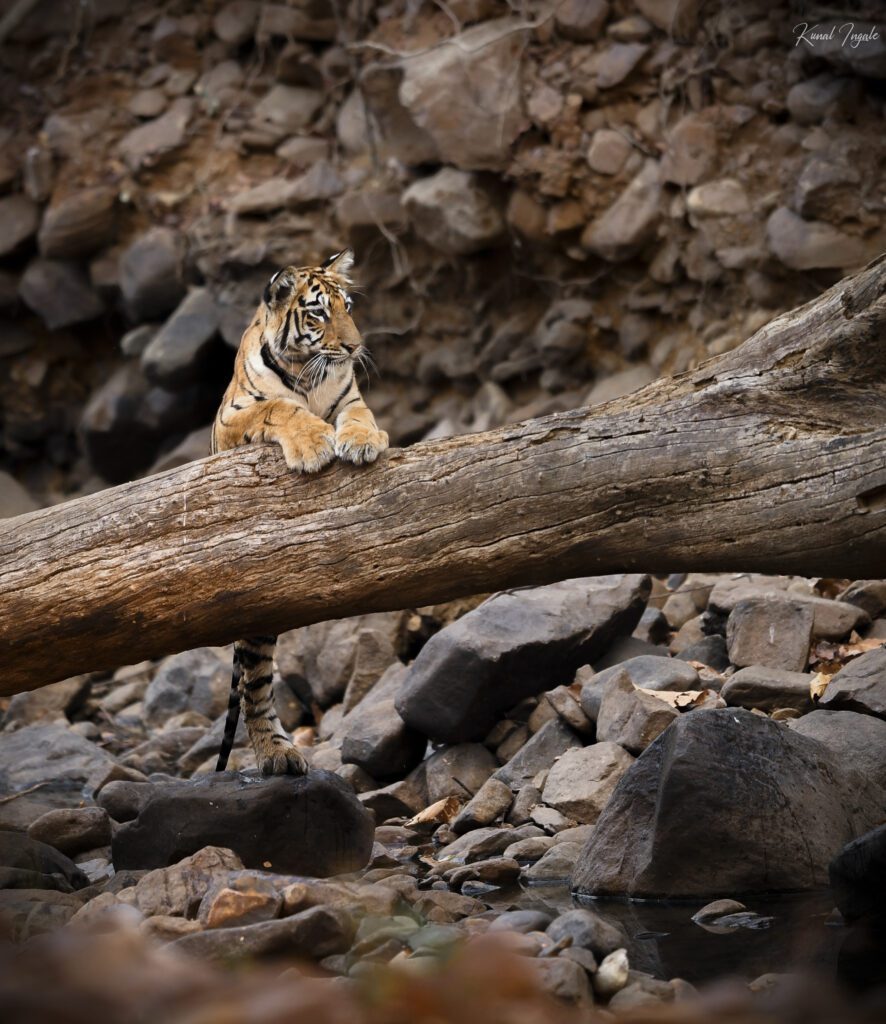
Frequently Asked Questions on Tiger Cubs
1.What is a tiger cub?
An offspring of a tiger is called a cub.
2. How many babies does a tiger have?
On an average a female gives birth to 2 to 3 cubs, which may also vary and she may birth 4 to 5 cubs, and sometimes even 7. Only 2-3 eventually survive.
Since the mortality rate is high, these carnivores have multiple births. If well supported by dominant males of her territory, she can raise 5 to 6 different litters in her life span. They wait about 18 to 24 months to birth again.
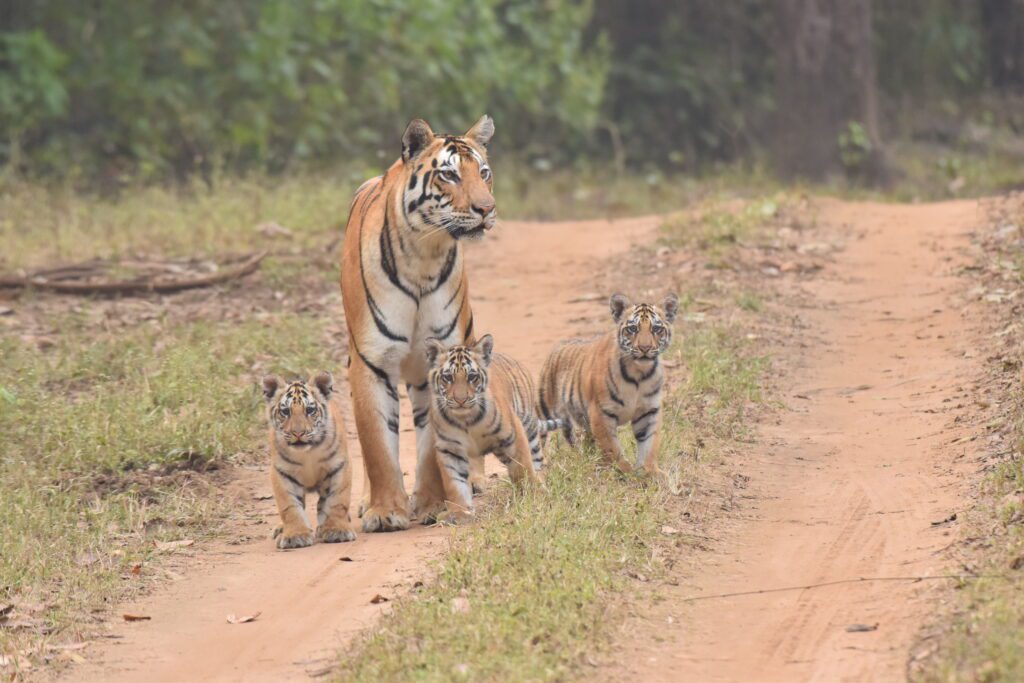
3. What are tiger cubs like?
Like any infant and new born, tiger cubs are cute, cuddly and quite playful. Tiger cubs are born with stripes, and are also blind and their eyes open sometime between 6-12 days. The weigh about 750 gm to 1200 gm approximately on birth.
Tiger cubs solely depend on their mother milk till they are 8-10 weeks old thereafter they start eating the meat their mother hunts for, while still suckling on her milk. They are weaned off the tigresses milk by 5-6 months. At 12 months they start accompanying their mother for hunts and learn to bring down a prey by imitation.
4. Are tiger cubs born with blue eyes?
Tiger cubs are born with milky blue eyes, that eventually change to their signature gold shade. Only White tigers maintain their blue eyes due to a recessive gene.
5. When do tiger cubs leave their mother to establish their territory?
Tiger cubs leave their mother to establish their solitary independence at 20-24 months, as sub-adults.
*****************
Written by: Natasha Sinha
Valuable inputs: Ashish Tirkey, Manager Tree House Hideaway, Bandhavgarh and Gaurav Dhotre, Naturalist, Waghoba Eco-Lodge, Tadoba.
Reference: Tigers, By Stephen Mills, BBC Books
